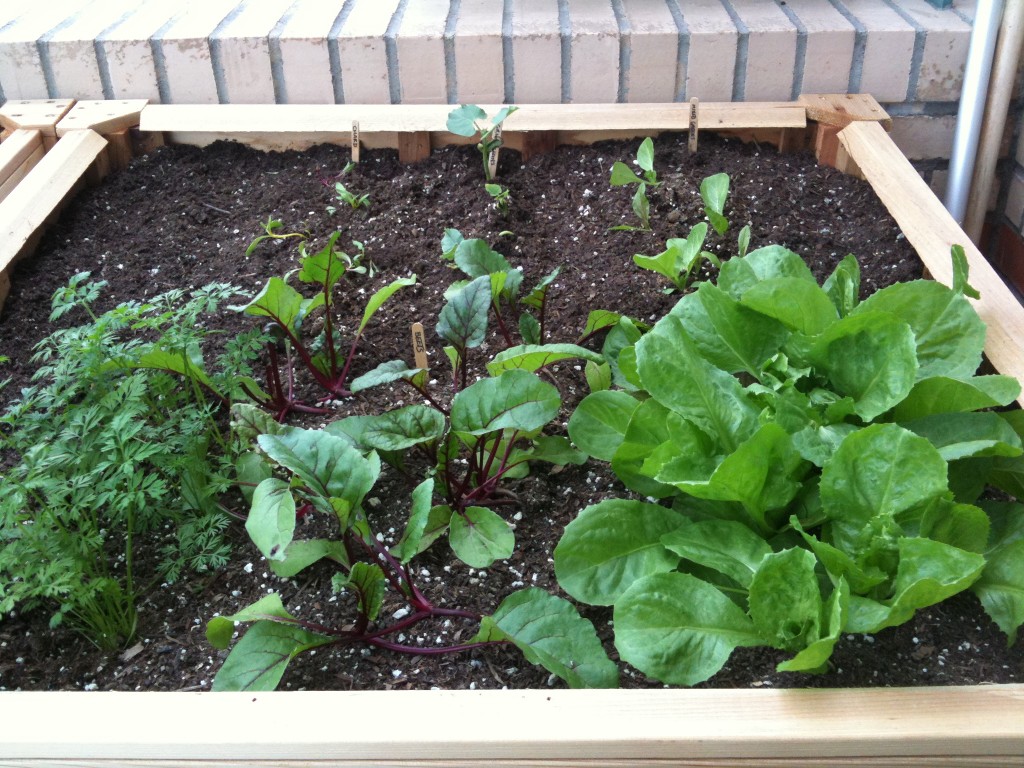 I thought this topic was fitting since I’m in the process of this very thing.
I thought this topic was fitting since I’m in the process of this very thing.
Edward Stern is a guest blogger for An Apple a Day and a writer on earning your online nursing degree for the Guide to Health Education.
A favorite past time of many is gardening. Not only is it a relaxing, centering way of spending free time, but it also can result in organic, nourishing food that you can never get fresher. Eating organic has many benefits: it helps reduce your carbon footprint, it contributes to a sustainable food source, and it keeps your diet healthy and balanced.
You don’t need wide open green pastures to create an organic garden. Even urban-dwelling gardeners can get in on the action by creating apartment gardens. Apartment gardening is becoming more and more popular and is a great way to bring some green — and healthy, fresh eating — to a limited space. Continue reading to get tips on how to start your apartment garden. For more help with gardening, check the 100 best gardening blogs.
Find the perfect place. Space may be limited, but if possible, it should still be chosen carefully. Start gardening on your balcony, or better yet, a rooftop. Find the sunny and shady areas, and set up your gardens accordingly. Some plants need a lot of sun, others thrive in the shade, so let that dictate what goes where, and what you end up growing. Rooftops are great for more space but can also get very windy. To combat the elements, set up a glass panel which will help block wind but won’t reduce sunlight. Or use netting, which can further be used to grow vines, beans, and peas, among other plants.
Organize, organize, organize. While being enthusiastic about starting an apartment garden is awesome, don’t go overboard. Keep your balcony or rooftop accessible and clutter-free. Only grow what you have space for. Additionally, think it through before hitting the garden supply store. Think of what pots you want — how about terra cotta? Or do you want to go for something a little more original, like an old watering pail (just make sure you add drainage holes to the bottom)? Plan what you’ll grow to get a good variety of vegetables. Lettuce, spinach, and peas are examples of plants that will do well in relatively small containers, so look into buying seeds along these lines to have a thriving apartment garden with personal style to boot.
Create window boxes. These are perfect when space is especially hard to come by. Most gardening supply stores will have them, or if you know a handyman (or are one yourself) they’re very easy to build — all you need is a sturdy box. Fill with soil, add seeds, place near good sunlight, and you’re golden. When choosing plants, select a good variety: some tall, some bushy, some that trail. Consider colors that coordinate for a truly beautiful box. Tall plants (like beans), should be planted at the back of the box and sparingly on the sides, with vines and trailers up front, like small squash such as zucchini. Throw lettuce and spinach in the middle and you’ll have good variety for eating organically — and plants that are compatible with each other spacing-wise. As always, be sure to thin out any stragglers so others can healthily grow in their place.
Grow tomatoes. A garden favorite of many, tomatoes are a staple of many apartment gardens. They are very easy to grow in containers and produce an abundant harvest, so you’ll be eating tomatoes fresh off the vine throughout the growing season. Unless you’re an experienced gardener, just buy a starter plant from the local nursery. Be mindful that tomatoes need lots of sunlight and water, but are otherwise easy to take care of.







